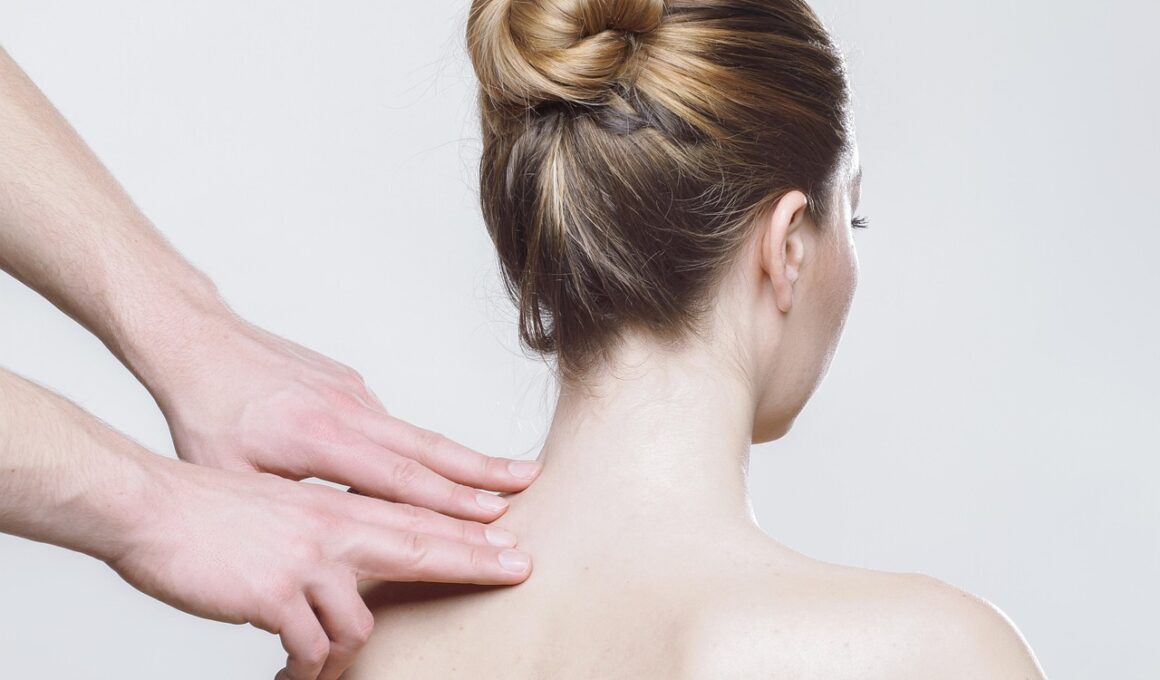Integrating Manual Therapy into Rehabilitation Protocols for Athletes
In the competitive world of sports, the significance of rehabilitation cannot be overstated. Athletes face physical stress and pressure that often leads to injuries, making effective rehabilitation protocols essential. Manual therapy techniques play a pivotal role in such protocols, providing targeted and effective treatment options designed to alleviate pain and restore mobility. Integrating manual therapy into rehabilitation allows therapists to personalize treatment plans according to the specific needs of each athlete. These techniques enhance recovery by improving blood circulation, reducing muscle tension, and accelerating tissue healing. Additionally, manual therapy aids in addressing dysfunctional movement patterns, which are crucial for athletes eager to return to their peak performance. By focusing on areas affected by injury or stress, therapists can employ techniques such as soft tissue mobilization and joint mobilization. This customized approach not only speeds up recovery but also empowers athletes to regain their confidence. Overall, the incorporation of manual therapy instructions enables a holistic rehabilitation experience that addresses not only physical recovery but also psychological aspects important for athletes post-injury.
Types of Manual Therapy Techniques
Understanding various manual therapy techniques is crucial for their effective application in rehabilitation. Among the most common techniques used by therapists are myofascial release, joint mobilization, and deep tissue massage. Myofascial release focuses on alleviating pain by releasing tension in the fascia, a connective tissue that surrounds muscles. This technique can improve flexibility and reduce discomfort. Joint mobilization aims to enhance the range of motion in joints through gentle movements, beneficial for athletes recovering from joint injuries. It helps restore normal function and decrease pain. Deep tissue massage targets deeper layers of muscle and connective tissues, addressing chronic pain and muscle tension. By applying deep pressure, therapists can promote blood flow and encourage healing. Another notable technique is craniosacral therapy, which focuses on the central nervous system to release restrictions and improve function. Each technique can be selected based on the athlete’s individual needs, injury type, and treatment goals. The combination of these approaches allows rehabilitation professionals to develop comprehensive treatment plans that address both immediate and long-term recovery goals effectively.
Incorporating manual therapy into rehabilitation protocols necessitates a thorough assessment of the athlete’s condition. A comprehensive evaluation allows therapists to determine the most effective modalities tailored to each athlete’s specific injuries and requirements. This process often begins with accurately documenting the injury’s history, assessing the range of motion, and identifying any associated pain patterns. Evaluating the athlete’s functional movements and biomechanics is also critical in diagnosing the factors contributing to their condition. The data collected enables therapists to tailor treatment plans, utilizing appropriate manual therapy techniques that align with the athlete’s rehabilitation milestones. Regular reassessment provides insights into the effectiveness of chosen techniques and allows for modifications based on the athlete’s progress. This dynamic approach ensures that athletes are receiving the most beneficial therapies throughout their recovery. Moreover, clear communication between therapists and athletes enhances the recovery process by focusing on mutual goals and expectations. Education plays an essential role in helping athletes understand the benefits of manual therapy, increasing their engagement in the rehabilitation process significantly.
The Role of Evidence-Based Practice
Utilizing evidence-based practices in manual therapy is vital for optimizing rehabilitation outcomes. Research studies consistently demonstrate the positive effects of manual therapy techniques, solidifying their application in rehabilitation protocols for various sports-related injuries. Evidence-based practice involves integrating clinical expertise with the best available research and patient values to guide treatment decisions. By relying on thorough research, therapists can choose techniques that have been validated in terms of effectiveness and safety. This approach not only ensures that athletes receive scientifically backed treatment but also builds trust between athletes and healthcare providers. Utilizing evidence-based methods encourages ongoing education to keep practitioners informed about the latest developments in manual therapy. Furthermore, collaborating with interdisciplinary teams can enhance understanding and application of therapeutic techniques made available through research findings. As the field of sports therapy continues to evolve, staying updated with the latest evidence fosters a culture of continuous improvement. Ultimately, it provides athletes with the most effective treatments available, maximizing the potential for successful recovery and return to sport.
Manual therapy can also significantly bridge the gap between rehabilitation and physical performance enhancement. Beyond merely treating injuries, these techniques can be utilized to improve athletic performance and prevent future injuries. Implementing manual therapy techniques assists in optimizing body mechanics, stability, and flexibility, leading to better overall athletic performance. Athletes may undergo manual therapy as part of their strength and conditioning routines to identify and address areas of tension that could lead to injuries. Regular treatments can enhance muscle recovery, allowing athletes to train at higher intensities while minimizing fatigue. Furthermore, manual therapy techniques can complement other modalities such as physiotherapy and strength conditioning. This holistic approach aims to create a comprehensive routine that not only focuses on recovery from injuries but also prepares the athlete for future competitions. Additionally, athletes often report feeling more balanced and in-tune with their bodies after receiving manual therapy, which increases their confidence during training and competition. Combining rehabilitation with performance-enhancing strategies establishes a well-rounded preparation for athletes as they continue their journey in sports.
Conclusion on Integrated Manual Therapy
Integrating manual therapy into rehabilitation protocols for athletes proves to be an effective strategy to enhance recovery and optimize performance. The array of manual therapy techniques available allows therapists to customize their approach, ensuring that treatment plans are tailored for each individual athlete. This personalized strategy promotes holistic healing that addresses not only physical pain but also psychological elements of recovery. The essential role of evidence-based practice provides therapists with defined parameters to ensure that each technique is applied effectively, leading to better outcomes for athletes. Above all, a commitment to ongoing education and collaboration among professionals enables an adaptive, informed landscape that maximizes treatment efficacy. Athletes are empowered through consistent and comprehensive care, ensuring they receive the best possible therapeutic interventions tailored to their unique needs. As manual therapy continues to evolve, its integration into rehabilitation protocols promises to revolutionize athlete care. Ultimately, this approach not only aids in hastening recovery but significantly contributes to injury prevention through proactive mechanisms, thereby enhancing overall athletic performance and longevity.
In summary, the integration of manual therapy into rehabilitation protocols for athletes stands as a testament to evolving practices in sports medicine. As the understanding of athlete care expands, so does the knowledge surrounding effective treatment techniques that promote recovery. Manual therapy not only addresses injury recovery but also enhances overall athletic performance. By incorporating various techniques, healthcare professionals can devise comprehensive rehabilitation plans tailored to individual requirements, ensuring the best outcomes for every athlete. In today’s fast-paced sporting environment, this kind of holistic approach provides added value, empowering athletes to return to their careers stronger and more resilient. With robust evidence backing, athletic rehabilitation is continually becoming synonymous with effective manual therapy methodologies. The need for proactive injury prevention is increasingly vital, as is commitment to ensuring athletes remain injury-free while pursuing their sports goals. Furthermore, raising awareness of the benefits of manual therapy aids in promoting its acceptance among athletes and sports organizations. This ongoing dialogue helps to foster a supportive environment for professional development and ongoing education among rehabilitation therapists. In conclusion, integrating manual therapy within athletic rehabilitation looks to be a promising frontier for sport injury management.
Manual therapy techniques have become indispensable tools for sports rehabilitation professionals worldwide. As athletes continue to push their physical limits, creating effective and personalized rehabilitation protocols is essential for both recovery and performance. Armed with an understanding of various manual therapy methods, therapists can significantly impact how athletes recover and return to their disciplines. Through dedicated application of evidence-based practices, therapists curate individual treatment plans that maximize the efficacy of rehabilitation. The integration of these hands-on techniques addresses both physical and emotional aspects of recovery, showcasing their importance in comprehensive care. Moreover, athletes equipped with the knowledge and experience of manual therapy often exhibit greater awareness of their body mechanics, enabling them to train smarter. Exploring the continued growth of manual therapy approaches will reveal new methodologies, enhancing recovery outcomes. This focus on innovation solidifies the relevance of manual therapy within the broader context of sports rehabilitation. In summary, integrating manual therapy into rehabilitation programs is highly beneficial and essential for ensuring athletes remain competitive while minimizing their injury risks.


